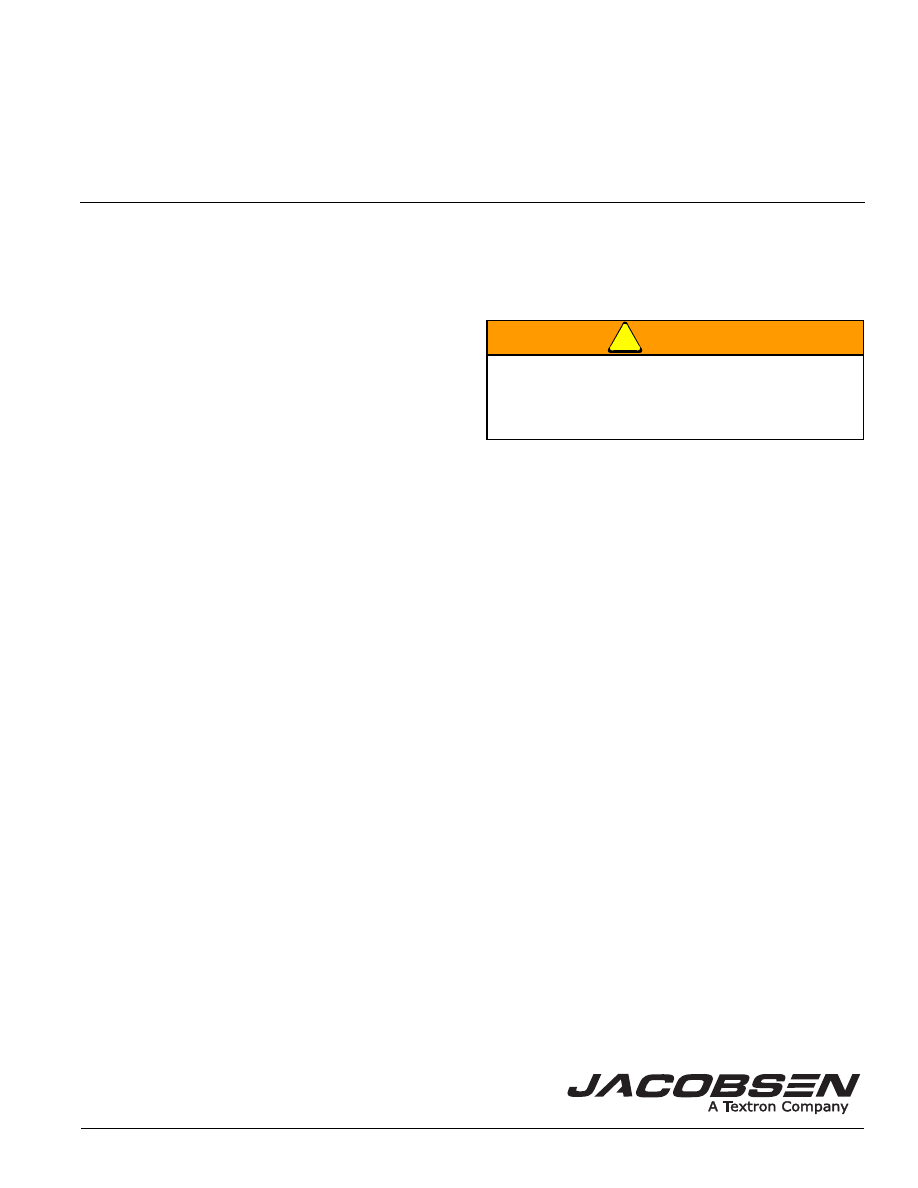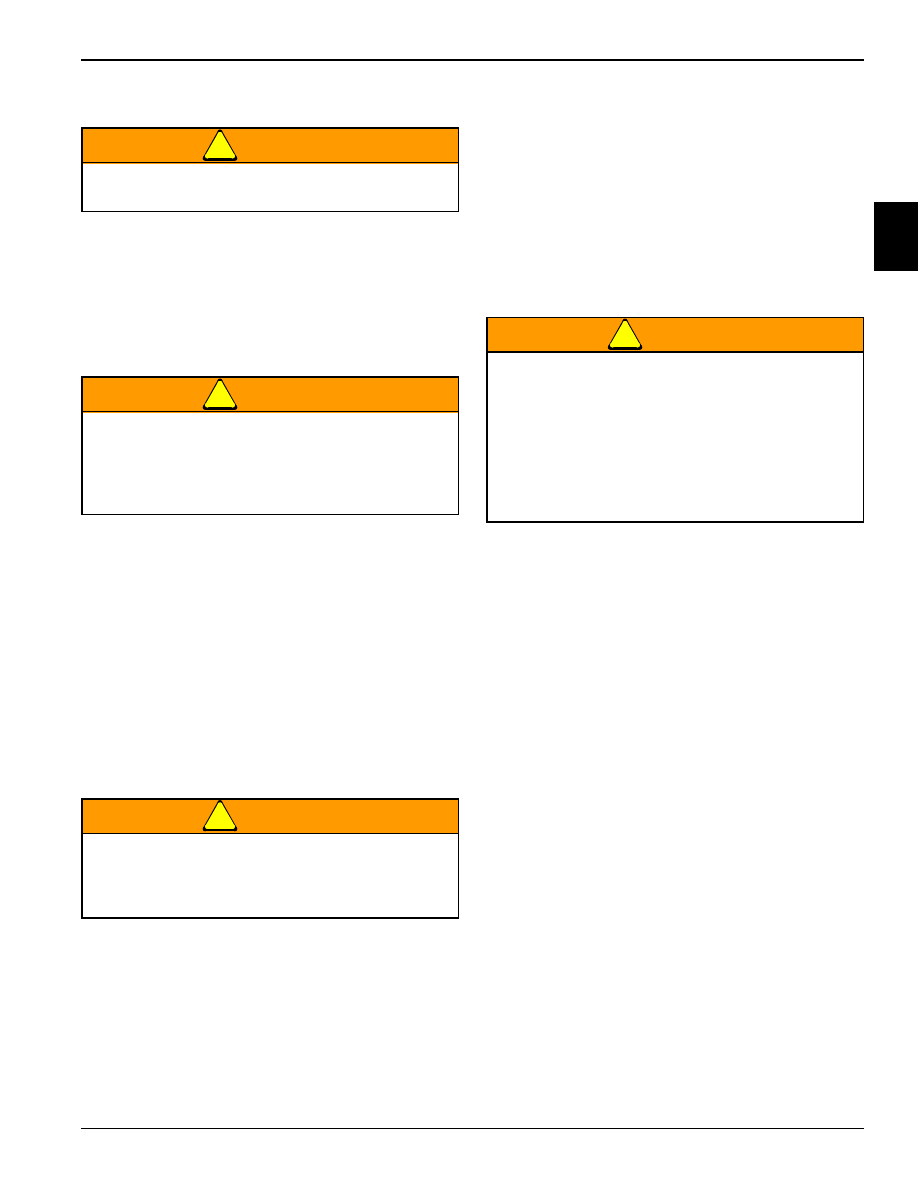Suzuki: Engine K6A-YH6. Manual — part 1

i
Foreword
General
This manual provides detailed information and
procedures to safely repair and maintain the following:
Suzuki K6A-YH6 gasoline engine
This manual is intended to introduce and guide the user
through the latest factory-approved troubleshooting and
repair techniques and practices.
Before you attempt to troubleshoot or make repairs, you
must be familiar with the operation of this engine. Refer to
the operator’s manual and parts manual for specific
information on these topics.
THE INFORMATION CONTAINED IN THIS MANUAL IS
BASED ON ENGINES MANUFACTURED UP TO THE
TIME OF PUBLICATION. JACOBSEN RESERVES THE
RIGHT TO CHANGE ANY OF THIS INFORMATION
WITHOUT NOTICE.
CALIFORNIA
Proposition 65 Warning
!
WARNING
Trademark Acknowledgement
Jacobsen acknowledges the following trademarks for
company names or products mentioned within this
publication:
Jacobsen® is a registered trademark of Textron Inc.
Suzuki® is a registered trademark of the
American Suzuki Motors Corporation
ThreeBond™ is a trademark of the ThreeBond Co., Ltd.
Plastigage® is a registered trademark of AE Clevite Inc.
Certain vehicle components contain or emit
chemicals known to the State of California to
cause cancer and birth defects or other
reproductive harm.
ii
FOREWORD
How to Use This Manual
This manual is designed to provide multiple ways to
locate and access repair information.
Read each section in entirety before beginning a
procedure. Proper understanding of machine operation
and components is the key to successful diagnostics and
repair.
Make use of special information features with in this
manual in order to be better prepared to perform repairs.
Always follow manual procedures and safety guidelines.
Never take shortcuts.
Table of Contents
Major machine components or topics of interest are
separated into specific chapters. Each manual lists these
chapters in a main Table of Contents.
Chapter Table of Contents
Each chapter begins with a detailed Table of Contents
related to the specific machine component or system.
Use the Chapter Table of Contents to find specific
component or procedural information.
Index
An alphabetical Index is located at the back of the
manual.
Use the Index to find specific components and related
procedures.
Required Tools and Materials
Some procedures will require the use of specific tools
and/or materials. These tools and/or materials will be
listed for reference, prior to beginning a procedure.
Specifications
Specifications are listed at the point of use with in the
procedure.
Quick Reference Specifications
A list of all machine specifications can be found in
Chapter 2 Specifications and General Information. This is
a list of all specifications from each chapter, combined
and listed in one place for easy reference.
Warnings and Cautions
Warning and Caution indicators are located throughout
the manual at specific points of interest. These notices
are given to prevent personal injury, death and/or
equipment damage. Always heed these notices, and
practice common sense when performing any
maintenance or repair procedure.
Notes
Special notes are given in order to draw attention to
detailed instructions. These notes are intended to give
further important information regarding the machine
and/or a step in a procedure.
Troubleshooting
Troubleshooting charts are provided in chapter 6 to aid in
the diagnostic process. Use these suggestions to aid in
identifying a potential mechanical or machine adjustment
problem.
Copyright 2008 Textron Inc.
“All rights reserved, including the right to reproduce this material or portions thereof in any form.”

1-2
SAFETY
1
Introduction
Safety is the most important element of any repair
procedure. Knowledge of the procedure to be performed
and safe work habits are essential to preventing death,
personal injury, or property damage. Use the following
statements as a common-sense guide to proper work
and tool-use habits.
Prepare for the Job
Preparation is essential to complete a procedure in a
safe and efficient manner.
• Wear proper clothing. Loose or baggy clothing could
become tangled in moving parts.
• Use eye/face protection. Always use proper eye/face
protection to protect your eyes from flying debris or
chemical splatters.
• Wear protective footwear. Wear safety shoes
(steel-toe) to protect your feet from falling objects.
• Use gloves when handling parts. Parts may have
sharp edges or may be hot.
• Remove jewelry prior to servicing electrical systems.
• Prepare proper tools and equipment. Always use the
correct tool for the job. Improper or homemade tools
can cause injury or machine damage.
• Prepare needed parts and materials. Gather the
needed parts and materials before beginning the
procedure.
• Allow machine to cool. Many components can get hot
during operation. Be sure to allow enough time for
components to cool before beginning service.
• Prepare proper work-space lighting. A well-lit work
area can make the job easier.
• Follow procedures and safety warnings. Service
procedures are written to be as safe and efficient as
possible. Never take shortcuts.
• Be prepared for emergencies. Accidents can happen,
even under the best conditions. Fire extinguishers
and first aid kits should be well maintained and easily
accessible.
Safety Notices
Throughout this manual, the following key safety words
will be used to alert the reader of potential hazards.
Become familiar with these words and their meaning.
Take all precautions to avoid the hazards described.
!
DANGER
!
WARNING
!
CAUTION
NOTICE
Keep Work Area Clean
A clean, organized, well lit work area is important to
promote safe working conditions.
• Keep floor clean of debris and clear of parts and
tools.
• Clean up any spilled fuel, oil, and/or chemicals
immediately.
• Store all air hoses and electrical cords properly when
not in use.
This safety alert symbol is used to
alert you to potential hazards.
Indicates an imminently hazardous situation
which, if not avoided, WILL result in death or
serious injury.
Indicates a potentially hazardous situation which,
if not avoided, COULD result in death or serious
injury.
Indicates a potentially hazardous situation which,
if not avoided, MAY result in minor or moderate
injury and property damage. It may also be used
to alert against unsafe practices.
Indicates a potentially hazardous situation which,
if not avoided, MAY result in property damage. It
may also be used to alert against unsafe
practices.
!

SAFETY
1-3
1
Keep Work Area Well Ventilated
!
WARNING
Certain test and adjustment procedures require the
engine to be running. Be sure work area is well
ventilated; never run the engine in an enclosed area.
Use Proper Eye and Face
Protection
!
WARNING
Always wear eye protection while in a shop environment.
• Safety Glasses: Safety glasses offer a minimum level
of protection from flying debris.
• Face Shields: Face shields are often used along with
safety glasses to offer a higher level of protection
when sparks and flying debris are present.
• Vented Goggles: Goggles offer side protection not
offered by safety glasses alone.
• Unvented Goggles: Unvented goggles offer
protection from chemical splashes and vapors.
Use Lifting Equipment Safely
!
WARNING
• Always use a lifting device with a lifting capacity
greater than the weight of the item being lifted.
• Secure the load to the lifting device using cables,
chains, or slings rated to handle the load being lifted.
Fasteners being used to connect lifting devices must
be strong enough to handle the load. Also be sure
the mounting point of load is strong enough to handle
the load.
• When using a lifting device, always connect the load
so it is balanced.
• Always use a lifting device on a hard, level surface.
• Lower the lifting device to the lowest point before
moving. Move the load slowly.
• Always support the load as soon as possible; never
leave a load suspended in mid-air.
Use Compressed Air and Air
Tools Safely
!
WARNING
• Compressed air is a useful tool when used in a safe
manner.
• Always use eye and ear protection while using
compressed air and air tools.
• When using air tools, do not exceed the air pressure
rating for the tool.
• When using an impact wrench, always use approved
impact sockets. Never use standard sockets on an
impact wrench.
• Disconnect the air supply before changing air tool
attachments.
• Never point air nozzles or air tools at another person.
• Always maintain air tools properly.
Never operate the engine without proper
ventilation; exhaust fumes can be fatal if inhaled.
Always use approved personal protection
equipment. Avoid workplace hazards by wearing
properly maintained, approved eye and face
protection. Failure to use appropriate protection
equipment may result in death or serious injury.
Always check the lifting capacity and condition of
hoists, slings, cables, or chains before use.
Using underrated or worn lifting components can
result in death or serious injury.
Always wear approved eye and ear protection
while using compressed air. Misuse of
compressed air could result in death or serious
injury.
• When using air nozzles, air pressure should
not exceed 30 psi (206.8 kPa).
• Never direct air nozzles or tools at a person.
• Never point air nozzles directly at skin.

Нет комментариевНе стесняйтесь поделиться с нами вашим ценным мнением.
Текст